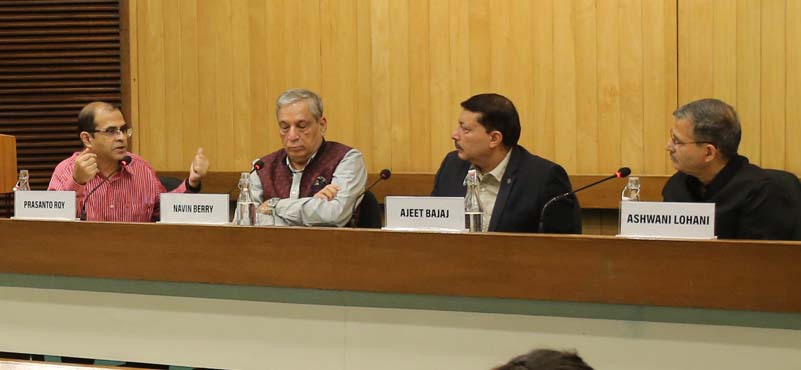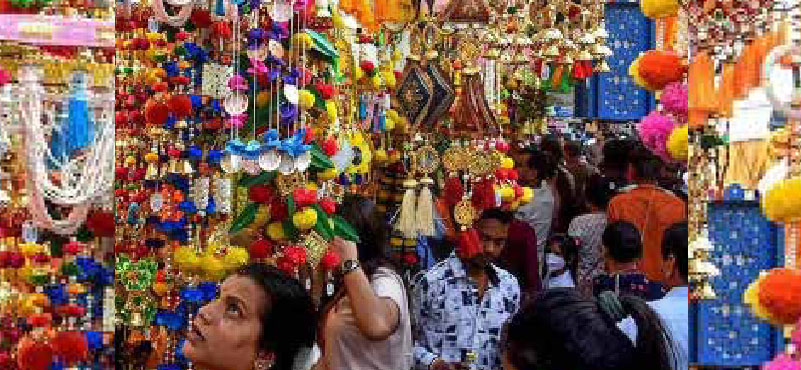The discussion titled “Over-tourism in India: The Paradox of Prosperity and the Pockets of Crisis” tackles a major global dilemma: the conflict between the intense desire for tourist revenue and the negative impacts of excessive visitor numbers. Panelists, including Navin Berry, Ashwini Lohani, Ajeet Bajaj, and Prasanto Roy, agree that the crisis isn’t widespread “over-tourism” across India, but rather a problem of under-capacity, inadequate regulation, and concentration in fragile pockets—specifically religious sites and hill stations.
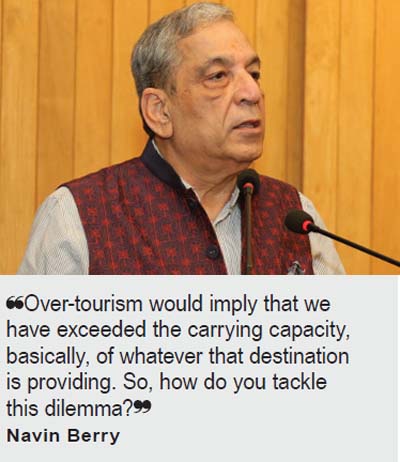 Navin Berry: Coming to today’s subject – tourism matters. The dichotomy or the contradiction is that everybody in the world wants tourists. You spend millions of dollars to bring tourists, whether it’s a state government, it’s a city, a country. Globally, everybody is looking at tourism as a source of revenue. Many countries like Singapore, Belgium, all over Europe, they are sustained, the economy is a large part, based upon tourism. Even closer home, Nepal, Sri Lanka thrive on tourism. Thailand has a notable presence in tourism, so has Dubai. So, you have everybody vying for the tourist and then you see somebody like Jeff Bezos, the founder of Amazon. He was getting married in Venice. And all over the city, there were posters saying, we don’t want you to come here. There were protests on the street wanting him to go anywhere else in the world, but not Venice. Venetians had enough of tourists!
Navin Berry: Coming to today’s subject – tourism matters. The dichotomy or the contradiction is that everybody in the world wants tourists. You spend millions of dollars to bring tourists, whether it’s a state government, it’s a city, a country. Globally, everybody is looking at tourism as a source of revenue. Many countries like Singapore, Belgium, all over Europe, they are sustained, the economy is a large part, based upon tourism. Even closer home, Nepal, Sri Lanka thrive on tourism. Thailand has a notable presence in tourism, so has Dubai. So, you have everybody vying for the tourist and then you see somebody like Jeff Bezos, the founder of Amazon. He was getting married in Venice. And all over the city, there were posters saying, we don’t want you to come here. There were protests on the street wanting him to go anywhere else in the world, but not Venice. Venetians had enough of tourists!
Now, what is happening in our own country? I’ve just got a few examples here to share with you the magnanimity of the issue of overtourism. One example, Kerala made it to the Time Magazine’s 50 Extraordinary Destinations to Explore in the year 2022. Two years later, Fodders Guide, which is like a Bible for travelers, singled out Kerala on the no-list for 2025. The Global Travel Guide list said, this destination does not provide sustainable tourism practices and mounting environmental challenges are being seen in Kerala. So, it was categorized amongst destinations beginning to suffer.
If you take a state like Goa, the number I have is the local population is 1.6 million. The state has more than 8.5 million tourists through the year. We are almost talking five times the number of local population to visiting tourists. The danger of Goa going astray from tourism has become monumental for locals who find that there are more people there from Delhi and Bombay than their own people. And many of them feel somewhere their culture and their traditions are getting lost.
 And you see a place like Taj Mahal. In 2018, the local administration pinned down the number of 40,000 as daily visitors to be allowed into the Taj. There are numerous issues. Brindaban’s Banke Bihari temple, in the last four years, some 40 people died through suffocation and stampedes. And it’s supposed to have a daily footfall of 50,000 through narrow winding streets, and most people don’t get a darshan. You don’t get a chance to even go and see the Gods, because there are milling crowds all over the place.
And you see a place like Taj Mahal. In 2018, the local administration pinned down the number of 40,000 as daily visitors to be allowed into the Taj. There are numerous issues. Brindaban’s Banke Bihari temple, in the last four years, some 40 people died through suffocation and stampedes. And it’s supposed to have a daily footfall of 50,000 through narrow winding streets, and most people don’t get a darshan. You don’t get a chance to even go and see the Gods, because there are milling crowds all over the place.
Over-tourism would imply that we have exceeded the carrying capacity, basically, of whatever that destination is providing. So, how do you tackle this dilemma?
Mr. Lohani, I’ll start with you. As a state administrator, what do you think is the problem that’s going on? You have a place like Ujjain in Madhya Pradesh, where you are counting numbers. And you also have a destination like Pachmani, which is a very sensitive destination. And what do you see is the way out of it?
 Ashwani Lohani: Over-tourism, really, I could not understand. I think it’s not about over-tourism, it’s about under-capacity or inability to regulate. We have about 140 crore people in India, and the disposable incomes are rising. The economy is improving very fast. So, people will definitely move around. And we have to prepare the infrastructure and the regulations accordingly. So, if you are unprepared for that, it will emerge as over-tourism. We have got tourism departments in the center. All various states have tourism departments, tourism corporations, tourism bodies, tourism associations. What is the intent of all those?
Ashwani Lohani: Over-tourism, really, I could not understand. I think it’s not about over-tourism, it’s about under-capacity or inability to regulate. We have about 140 crore people in India, and the disposable incomes are rising. The economy is improving very fast. So, people will definitely move around. And we have to prepare the infrastructure and the regulations accordingly. So, if you are unprepared for that, it will emerge as over-tourism. We have got tourism departments in the center. All various states have tourism departments, tourism corporations, tourism bodies, tourism associations. What is the intent of all those?
The intent of all that is to promote tourism, to increase tourism. We find choked religious sites. Religious tourism destinations are all choked. Go anywhere. Go to Varanasi, go to Bhubaneswar, go to Tirupati. Choked hills. All the hill stations are choked. Choked roads. Even in a place like Delhi, you’ve got roads which are choked every day, day in and day out. Choked cities and long queues everywhere. This is the reality. We have to prepare for that. We recently saw crumbling hills in Uttarakhand and Himachal. Why? Because of over-construction, unregulated construction. In the late 19th century, all the five hill stations were connected with the plains by means of narrow -gauge lines. Now we are finding broad -gauge railways going inside hills. It is not exactly over-tourism. It’s under-capacity at tourism sites and inadequacy of tourism infrastructure.
Why does that happen? Because it’s indeed easy to focus on what is easy and not do what is difficult. Like, I can say about trains. Increase the number of trains without increasing the length of tracks. You want to increase the number of cars without increasing the area of roads. You can easily add aircrafts, but adding airports is difficult. All that will result in overcrowding. There are no easy solutions to that.
The population is growing, so are the disposable incomes rising. People will travel, people will move. We have to be prepared for that. What can be done? In the long term, I feel we should build new hill stations. We should develop new tourism destinations. I’ve been head of tourism in Madhya Pradesh on three different occasions. What we know about Madhya Pradesh is very little of what actually exists there. A lot of heritage sites which can be further developed, they can be developed as tourist destinations. We have to disperse tourists, give proper connectivity, give proper signages.
We’ll have to create more destinations so that the tourists are dispersed. We’ll have to create regulations. In hill stations, why can’t we regulate the number of cars going to the hill stations? Why can’t we have a hefty surcharge on each car?
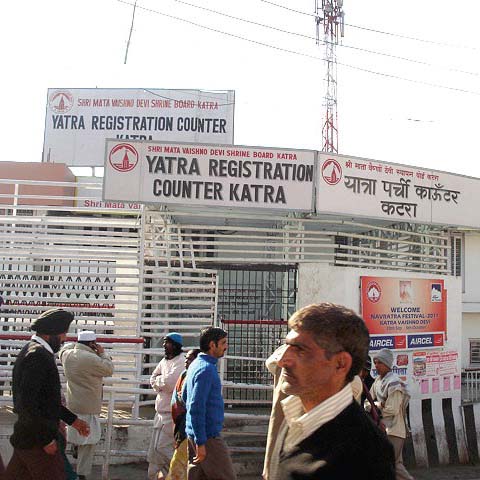 The Britishers created so many hill stations for us. Why can’t we do that? Steeply increase registration charges for the second car or the third car and do not permit new cars without proof of dedicated parking space. These tough and difficult measures need to be taken. Merely discussing these issues will not do. Things actually have to happen on the ground.
The Britishers created so many hill stations for us. Why can’t we do that? Steeply increase registration charges for the second car or the third car and do not permit new cars without proof of dedicated parking space. These tough and difficult measures need to be taken. Merely discussing these issues will not do. Things actually have to happen on the ground.
What about Madhya Pradesh? We have developed almost all the sites in Madhya Pradesh. basic facilities were developed, tourist police was put in place, signages were put in place, entire state with signages. The hotels, we built a number of hotels. The state government itself built a number of hotels.
We increased the capacity to handle tourists. But still, Ujjain is crowded despite development of Mahakaal. Again, because the number of people who visit, you can’t control the number of people. You have to basically disperse people, because people will travel. If you have money, if you have income, disposable income, you will travel. Everyone will travel.
Instead of over-tourism, we should increase our capacity to handle tourists, build more destinations, disperse tourists.
Navin Berry: Ajeet, what is your impression? Has it been a failure of the planners, so to say, in providing newer destinations? We are stuck with the same. My second question to you would be, you have been a mountaineer and there is this huge picture that came out, I think, three years ago of Mount Everest, where there’s a queue of mountaineers waiting for their turn to come, to go up. And what is the impact of all this? Can you also have more Mount Everests, as we ask for more destinations? Is that the answer?
 Ajeet Bajaj: So, I’d just like to begin by the United Nations World Tourism Organization, their definition of over-tourism, they say it’s over tourism when excess numbers influence the perceived quality of life of citizens and or quality of visitor experience in a negative way. But then again, the art of tourism is about inviting discovery while preserving what makes a place worth discovering. So, there is the tourism paradox. There is no doubt about it.
Ajeet Bajaj: So, I’d just like to begin by the United Nations World Tourism Organization, their definition of over-tourism, they say it’s over tourism when excess numbers influence the perceived quality of life of citizens and or quality of visitor experience in a negative way. But then again, the art of tourism is about inviting discovery while preserving what makes a place worth discovering. So, there is the tourism paradox. There is no doubt about it.
Definitely we need more destinations, but building destinations, there is a long gestation period. But coming close to a topic very close to my heart, Mount Everest. The summit of Mount Everest demarcates the boundary between Nepal on the south side and Tibet, I like to call it Tibet, on the north side. So, you can climb from the traditional route which is what Sherpa Tenzing and Sir Edmund Hillary used, way back in 1953 to get to the top or the north face and the northeast ridge – so these are the two routes and my daughter and I, since you were talking about it, we climbed from the north face.
Now just to give you an example – the Nepalese Permit system is very open. In the last three years, they’ve had close to 500 people climbing. But it’s not just the 500 people climbing from there. It’s also the Sherpa support and so on, which means at a time you can have up to about 1,200 to 1,500 people on the mountain, which is way over the carrying capacity. There are other mountains there as well, like Lhotse, which is the world’s fourth highest mountain. There’s Nupse.
So invariably what has happened is during the climbing, there is a small weather window which is when you can actually get to the Summit of Everest, right? Now, what has happened is with 500 permits, there’s been a lot of garbage issues. There’s been in the last three years, this year, there were five deaths on the south side. There were eight deaths last year.
And the year before, in 2023, 18 people died because of the bottlenecks. And there’s huge garbage issues on the South wall and on the entire mountain. Now, yes, they are going to do something about it. They’ve increased the permit fee from $11,000 to $15,000. But I don’t think that’s going to be a deterrent.
 On the North side, the Chinese have a no-nonsense attitude. The north side is a harder route. It’s the north face. It’s steeper. It’s colder. There’s more wind. But they allow only about 100 people to climb. The mountain is cleaner. It’s a strict leave -no -trace ethos on the mountain. And the last three years, there have been no deaths at all. So I think that is a good thing, is a great example of managing, carrying capacity and over-tourism. But well, we’ve spoken to the government in Nepal and I think they are going to take steps because this mountain is one of the seven natural wonders of the world. And like we were talking just before, it’s a mountain they hold in trust for the entire humanity. And they have to sensitize the climbers, as they have to have a strict enforcement on the mountain as well, and ensure we as climbers leave the mountain cleaner than we find it.
On the North side, the Chinese have a no-nonsense attitude. The north side is a harder route. It’s the north face. It’s steeper. It’s colder. There’s more wind. But they allow only about 100 people to climb. The mountain is cleaner. It’s a strict leave -no -trace ethos on the mountain. And the last three years, there have been no deaths at all. So I think that is a good thing, is a great example of managing, carrying capacity and over-tourism. But well, we’ve spoken to the government in Nepal and I think they are going to take steps because this mountain is one of the seven natural wonders of the world. And like we were talking just before, it’s a mountain they hold in trust for the entire humanity. And they have to sensitize the climbers, as they have to have a strict enforcement on the mountain as well, and ensure we as climbers leave the mountain cleaner than we find it.
Navin Berry: Prasanto, can I come to you to ask you, as Ajeet has just pointed out, is it commercialization, over commercialization, is it also some kind of human greed which comes into play where you start ignoring or overlooking the fact that by having more numbers than you should, you’re actually killing the goose that lays the golden egg – because you’re going to kill that very product which people are coming to see and experience. And my last point is, that you talked about the rates being increased from $11,000 to $15,000. In our monuments, for instance, we have rates like 50 rupees to enter a monument. Except for the foreigners. So do you think pricing, you just raise the rates and make it difficult for a commoner to come and deprive him of seeing the Taj Mahal. What is your take on that?
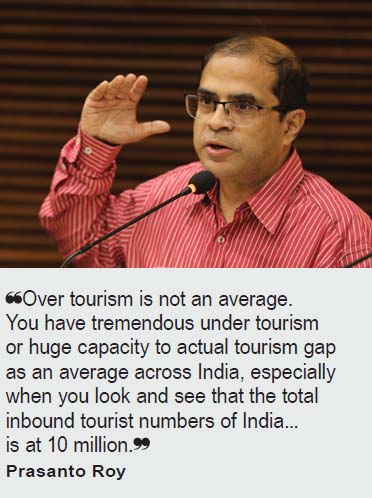 Prasanto Roy: Okay, so some great points there. I am going to start with some data or some data related points. I was part of this small meet which was a very nice conversation between Ajay Banga of the World Bank and Shireen some months ago. And among other things, Ajay made an interesting point.
Prasanto Roy: Okay, so some great points there. I am going to start with some data or some data related points. I was part of this small meet which was a very nice conversation between Ajay Banga of the World Bank and Shireen some months ago. And among other things, Ajay made an interesting point.
He said that where I live, New York, we get 62 million tourists in a year. India gets 10 million. Okay, now this caused a lot of consternation and you know there was blowback from the ministry and you know government people said that you know we don’t really want all those numbers, we are fine, we have so many people in the Kumbh Mela, we have so many people etc now, obviously, that’s something that the tourism sector doesn’t quite agree with, because they are looking at the quality of tourism and tourist, the spending capacity, the people who are passionate about tourism, ecotourism. So it’s not just a numbers point. Now supposing we want to get from 10 million to even 30 or 40 million.
Yet we are talking of over tourism in certain pockets. So over tourism is not an average. You have tremendous under tourism or huge capacity to actual tourism gap as an average across India, especially when you look and see that the total inbound tourist numbers of India, yes, it’s at 10 million, it is far less than almost any major city in the world. So there’s a huge discrepancy and disconnect there. And obviously, what’s happening here is that there is, for a number of reasons, and we’ve looked at some data and so on, and we can talk about some of those reasons, people are just focused on a few destinations.
Now, one example, for example, is Delhi. Delhi government recently did a tourist kind of meet to try and look at this problem. And the problem statement for Delhi is that almost everybody flies in through Delhi, but they’re not necessarily coming to Delhi, the inbound global tourists. They’re going to Uttarakhand, they’re going to Rajasthan, UP, lots of places, maybe even Madhya Pradesh. How do you make them stay for two days in Delhi and tell them that Delhi is also a tourist spot?
Just as an example, there are many countries which have looked at this problem. I won’t take up things like Bhutan where they have an aggressive cap of 200 ,000 tourists a year. They have got a couple of hundred dollars per night fee and all of that. Bhutan is capping its total numbers across. That’s not something we are talking of doing. Japan looked at its problem of overcrowding and so on in certain places and realized that 75% of overnight stays were in five prefectures. And so essentially, Tokyo, Kyoto, Osaka, and a couple of others. So, what do you do? So, the first step was that data. That data point that what were tourists doing? What were people coming in for?
First of all, were they tourists or not? Maybe the visa tells you. Sometimes we have the visa-free countries. So how do you capture that information? That what are they doing? So you can use data analytics, and they did. They’ve got a bunch of apps which they’re able to tap. privacy controls and all of that, as to what people were coming in for, where they were going, and why. And they put in an aggressive program to use that data to promote other destinations. And to get to some 60 million, so double the number of tourists, et cetera, in the next two, three years. It’s been a fairly successful program.
 It is things like free flights, subsidized flights to smaller places, to other places which are outside these, you know, or even the Shinkansen, the bullet train, you give the cheaper tickets or you give access from those bullet train routes to other cities which are subsidized. So there’s a bunch of things that they’ve done which is worth looking at.
It is things like free flights, subsidized flights to smaller places, to other places which are outside these, you know, or even the Shinkansen, the bullet train, you give the cheaper tickets or you give access from those bullet train routes to other cities which are subsidized. So there’s a bunch of things that they’ve done which is worth looking at.
So, if we recognize, agree and declare, yes, we do want to increase inbound tourism, which is something that we are not very clear about at present in terms of government statement because spend has stopped, inbound promotion has stopped, has slowed down, has reduced drastically. There’s almost a negligible budget for India’s inbound promotion in foreign events and all of that. But by and large, the tourism sector does believe that inbound tourism is important. So, if there’s a recognition and acknowledgement of that, then you’ve got to start looking and tapping data to see how do you actually go beyond this golden triangle or a bunch of hill stations and so on.
And just one last point is that I think Ashwini’s point that build more places, I would say leverage, promote those places. I spent a few days last week in Jharkhand in a place called Netarhat. It’s a hill station. It’s a beautiful place. And there are hardly any people there. I was happy that it was not like Nainital. But the fact is it’s there and it’s completely under leveraged.
I mean you can average somewhat and you can get some more people there.
Navin Berry: Just to put this into perspective as far as Indian tourism is concerned, inbound is a small portion in our country, domestic is the larger portion. Number two, India as we said traditionally is the size of Europe. 33 states, 33 destinations, each one has its own tourism department. And there are adequate numbers which are around with us, whether it’s airlines, whether it’s railways, whether it’s roads or hotels, experiential, they are all on the big bounce curve presently. So, there are adequate numbers around that we are talking about and the danger, so to say of over-tourism, is not so much from foreign as much as from domestic.
Prasanto Roy: If I can just add one point to this, which is the Goa example. So, Goa has this massive numbers, 8 .5 million tourists in 2023, six times its population, and so on. But foreign arrivals fell 60%. So, if you look at the local tourism sector and the ecosystem which thrives on tourism, they’re pretty unhappy despite these numbers because the spend per traveler has gone down drastically.
Navin Berry: That’s not entirely true. The profile of a domestic is today most impressive at all your busy destinations. The average spend from an Indian tourist, at the moment, is far more than an average foreign tourist, even in Goa. Goa was full of Russian tourists for a long time. who would come with everything which they needed. They weren’t buying anything locally in the city.
So, there were British tourists at one time, there were European tourists at one time, there were Israeli tourists prominent among the inbound. So, a lot of the negative side of tourism also came from the foreign tourists or the particular profile of the foreign tourists that was coming into Goa. Having said that, the question here is, as Mr. Lohani mentioned, and as also Mr. Bajaj mentioned, dispersal of tourists. I would cite an example of Vaishnodevi. They have a cap of numbers.

You are not allowed to start your darshan walk from the base if the tourist number has already gone over for the day. You may have to wait for two days, three days. Every destination has some defined points of entry. So, Goa may have, probably four roads that enter Goa from different states. you can control numbers, you can have a website which talks about numbers that you have reached, some kind of a controlling mechanism can be made available and today as Prasanto is saying, with so much of data crunching available with you, you can make this even available, as he said on apps, to say that you should go here, or not. People are going into Shimla without even a hotel booking and they are landing up there without a hotel, because all hotels are sold out, and they are spending the night in their cars.
So that’s the kind of lack of information available and how there’s some statistics to talk about the water capacity in Shimla. Some three years ago, there was no water in the hotels because I think if the water capacity was 40 something, the requirement went up to 100. So, there was no water in the city. Ajeet, comments on that?
Ajeet Bajaj: Absolutely. I think there are many global best practices, but before I get into that I just want to like to share with you the Ministry of Tourism and the Federation of Associations in Indian Tourism and Hospitality have this very audacious goal of tourism becoming a three trillion-dollar economy by 2047, we talk about Viksit Bharat. That’s 100 million inbound tourists.
Ashwini Lohani: I was involved with the tourism ministry when the international arrivals were less than 2 million. We were stuck at 1.8 million. We did some research. We found out that the number of foreign tourists who come to India is directly related to the number of air seats between India and the rest of the world. Increase that number of seats because you are operating at load factors of 95%, 90%, 95%, beyond which it’s impossible to increase the numbers. As large airports were built, more flights happened between India and the rest of the world. The numbers have gone up. Even now, it depends on your capacity at airports and the number of seats which fly between India and the rest of the world. That is how you are stuck at 10 million. It can be directly related to the development of the airport at Delhi, airport at Hyderabad, airport at Bangalore, airport at Mumbai. It can be directly related.
But the issue of over -tourism is not because of international tourists, because there are only 10 million. About 100 crore Indians travel within India, out of 140 crores. And that is why you see crowding. And this crowding is not at archaeological sites. Archaeological sites, you can now go to Red Fort and have a good walk around. Issue is at religious sites, religious destination sites, because that is where the bulk of tourism of India is, at religious tourism sites and in the hills, all hills. There the problem is major. That is what has to be handled.
Ajeet Bajaj: So, two global best practices, one is Machu Picchu, the Inca Trail. As you know, Machu Picchu is a 15th century United Nations World Heritage Site and high up in the Andes, what they have done, the way the Peruvians manage the Inca Trail is a great example. So how they manage is they’ve got visitor quotas. So, to go to Machu Picchu, they allow 5,600 tourists per day. There is a time slot entry and limited duration of stay. Then there are zoned circuits, so multiple fixed routes to disperse visitors. And only advance permits. There’s only online ticketing, no walk-ins.
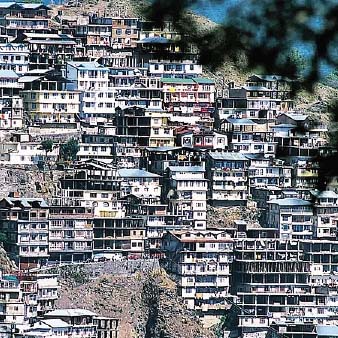 There are regular capacity studies and so on, and very, very strict rules. You can’t carry food up there, and no large bag, not even tripods, because they feel, it’s an ancient Inca site. Another good example is, One of the seven summits, it’s the Mount Denali in North America. So again, the Americans, I feel they manage climbing Mount Denali in an exceptional manner. The climbing season of Denali is from April till July. They allow only 1,500 permits during the climbing season. Before you are allowed to climb, the park rangers have a briefing with you. They sensitize you. And everything is carried out of the mountain, including human waste. And they do what is called adaptive management; they do annual monitoring, and then they review. And they are very quick to change the regulations. So, they have that flexibility every year.
There are regular capacity studies and so on, and very, very strict rules. You can’t carry food up there, and no large bag, not even tripods, because they feel, it’s an ancient Inca site. Another good example is, One of the seven summits, it’s the Mount Denali in North America. So again, the Americans, I feel they manage climbing Mount Denali in an exceptional manner. The climbing season of Denali is from April till July. They allow only 1,500 permits during the climbing season. Before you are allowed to climb, the park rangers have a briefing with you. They sensitize you. And everything is carried out of the mountain, including human waste. And they do what is called adaptive management; they do annual monitoring, and then they review. And they are very quick to change the regulations. So, they have that flexibility every year.
Navin Berry: How do they communicate all this to the tourists? It’s all on the website?
Ajeet Bajaj: It’s all on the website.
Navin Berry: So, it also presumes that whoever is coming will first go to a website? Yes. Now how do you bring that habit that you go to a website to see whether you should go today or not? If I’m going to Vrindavan, should I go to a website and first see should I go today or not? Or should I just wake up in the morning, sit in my car and go to Vrindavan?
Prasanto Roy: What we’ve seen is that people fairly quickly adapt to the need to look up online. For example, with safaris. I mean, this place where I went, Betla National Park, Palamu Tiger Reserve, the online system had completely broken down. Everyone was desperately trying to log on, and many people therefore didn’t go, because they don’t want to land up all the way there because you know October 1 that park opens, they were not sure if it would open and so on.
So, I think the data and the trend show that the online data use and online access etc. can be improved and made into a habit. Especially if there is a benefit, like either information that gives you clarity on the destination, or better prices, or a bunch of things thrown in as goodies, is a very good way to go and it works.
Navin Berry: But how much is our obsession with numbers to blame – how many tourists do you get? 5 million, 20 million, 100 million. Should we have other ways of quantifying and measuring the success of our tourism? And people like UNWTO have often espoused the cause of earnings from tourism, which should be a bigger drive. And we in India are still very obsessed with numbers. Are we creating the trap for ourselves to say that numbers matter and not the capacity.
Ashwini Lohani: I’ll talk about national parks. We have an issue there also, number of people visiting. But why do so many people visit? Because you have allowed blatant construction of hotels there. Why have we permitted that? Why do so many people go to the hill stations? Because you’ve got all sorts of unauthorized constructions, unregulated growth in number of hotels. If you don’t allow that, that will control the number of tourists. In parks, if you don’t have that many rooms to stay, it will control the number of tourists.
So blatant, unauthorized constructions of residential places is also one reason why your hill stations are choked, in parks you have got a problem, even in religious sites you have got a problem.
Navin Berry: A related question as a planner, as a city planner or a tourism planner. All these hotels that come up in pristine areas like the hills for instance. Concentration in a place instead of saying yes I will give you a license to build a hotel but go another 5 kilometers down.
Instead of having one single road having 200 hotels on it and you know all the entry points get choked. Is that kind of a possibility somewhere, Ajeet, would you say?
Ajeet Bajaj: If I may come to your previous question, you know, which to add to what Mr. Lohani said, that is there another approach, other than the numbers approach. So the United Nations World Tourism Organization, they have, as you’re aware, the Tourism and Travel Development Index. So, it’s not all gloom and doom for India. Our pre -COVID ranking on that, and there are 17 pillars of that index. And India’s ranking before COVID on that index was 54. And last year, we have improved our ranking to 39. And it measures the visitor experience. It talks about sustainability and how you are managing carrying capacity and all of that.
So, I think we are sensitive. Our Ministry of Tourism is looking at some of this, the Tourism and Travel Development Index. But definitely I think a lot more needs to be done.
Navin Berry: Going up the ladder on that index is 100 % an indication of the growing infrastructure that we are seeing which is making connectivity possible, which is making road connectivity, air capacity, all those factors are coming in where ease of travel is obviously coming through. So there’s no denying that bit. But what is happening is that over -tourism is not an issue for India as a whole. It is confined to certain pockets. And so obviously when you refer to not all is doom, obviously no. But the doom is in these pockets, not nationally. Nationally, tourism is prospering, as we said earlier in this discussion. There’s all-round growth of travel and tourism for all reasons, for all travelers, which is undoubtedly happening.
The concern here is in these pockets, it is for any of these fragile areas where the carrying capacity is very critical to be assessed and that is not happening.
Ajeet Bajaj: So according to the tourism industry, there are about 200 destinations in India that are giving us 80 % of business. These are destinations where there is an issue of overcapacity. And I do feel that we need to focus on these 200 destinations. Very recently, the Ministry of Tourism, they are looking at developing 50 new destinations and they are looking at doing it properly across India. And I wish Mr. Billa, our Director General Tourism was here to talk more about that. Developing new destinations is not an overnight job.
Navin Berry: And then to lure the customer, the traveler, the tourist to come to them. But yes, you have to start. Dispersing tourism is not such a problem. Not a single new destination has opened up in Himachal in the last 50 years. So, it requires a different kind of a planning thought in mind.
Prasanto Roy: As a numbers and data person, I would say it ultimately is about the numbers. But what numbers? It’s not the total numbers you’re looking at. Like, for example, Japan saw red flags when it found 75% was landing up in five places and nowhere else. India has that problem. So you know, if Manali is overcrowded. So, the playbook they used was they say that for all forms of booking, search, et cetera, give alternatives. So it would be like instead of Manali, you say Tirthan. If you are booking Goa, you get aggressive sort of promotion for Daman and Diu, for example.
So, this is the playbook they use, X instead of Y playbook. And if you, now it may be that I gave the example of Netarhat, which is a wonderful little hill station. It doesn’t have the same kind of hotels and so on, far smaller. But obviously, that’s a chicken and egg thing. If tourists begin to discover that there are other hill stations, it’s not just Nainital and wherever they need to go, Kasauli, there are other places they can go, this will increase demand. So this dispersion is not a problem.
It needs planning based on data. Currently there is interest in data and there are many other pegs that you can put on them. So for example, so there is this one destination, one product move from the government. Niti Aayog did this, right? So mapping that to, and globally, you know, like wines and products, they have a lot of tourist appeal if you package them well. Here we have a lot of these products in districts and they have history, they can be packaged. So it’s not just the archaeological sites.
Navin Berry: So is this ODOP going to lend itself to tourism?
Prasanto Roy: It is possible, but it was not intended at the moment. So there is a related thing, one district, one destination, which is ODOD, so it is kind of related to that. And you can use data to map that to tap under-utilized tourism.
Navin Berry: In fact, in many ways, the fact that we haven’t opened up any new destinations, or as many as we ought to have, is something which can work to our advantage today. Because our world view of how tourism infrastructure needs to come has changed dramatically. We need more rooted structures in the soil. We need an architecture which is more sensitive to the environment and local culture. It’s a good time to start investing in new infrastructure and new destinations, with these fresh perspectives in mind. As late starters, we can learn from examples.
Ashwini Lohani: We promoted the concept of ‘Aas-Paas’ tourism. We explore areas around your place of natural habitat. Why should I go to the United States or Europe to see various countries when I have not seen my own India? Why should I travel far, far distances. if my city itself, in outskirts, has got a number of tourist spots?
Prasanto Roy: So essentially, I think dispersion is key because we have this dual challenge of over -tourism in some places and overall severe under-leverage of tourism potential and capacity. And you’ve got to look at that data, figure out how to plan that dispersion and promote places which are there, which are maybe not as well -developed, but they’re great places if tourists land up there and find facilities to match.
Ajeet Bajaj: Closing thoughts, I think presently there is a top-down approach in our country. I feel all stakeholders have to come together, the government, most important is the local communities, the tour operators and the tourists. I think there is need for awareness campaigns for tourists. But most importantly what the government can do is carrying capacity studies and strict enforcement, set visitor limits. I think it has to be teamwork. All of us have to come together.
Ashwini Lohani: We have to look at pockets like hills stations, parks and religious sites – where you get over tourism. There should be a to-do list, with a clear plan involving the nodal authority of each state. You have to have a very simple plan like we had in Madhya Pradesh. It was a very, very simple plan, but it succeeded. Do as-pass tourism. Develop places around. Basically, a plan has to be written down, and that has to be taken forward for a couple of years.
Navin Berry: Summing up, based on what my fellow panelists mentioned, dispersal is the key, as I mentioned earlier. It is not a problem of the country, it is a problem of pockets. Across the country, we have a huge opportunity for more tourists, both domestic and foreign. With the opening of new airports in Delhi, Bombay, with the opening of many more airports around which are being opened to international traffic, dispersal will automatically happen. Data analysis which is available today in plenty should be used critically and firmly by the administration. I think Ajeet’s answer of how that management happens that this is peak season, numbers are over, route A is closed, route B is open, you go to a big museum in London like maybe the Windsor Castle or something, and moment the numbers reach the tipping point, they open one an alternate queue and they know how to disperse you, they will take you from the other side and make sure that you exit from somewhere else, so you don’t clash and don’t land up adding numbers, so that kind of thing is possible here.
And firmer administration control and also the seasonality factor, what Ajeet talked about dynamism in terms of controlling numbers, that should also come into being and I think using apps, using websites for information.

